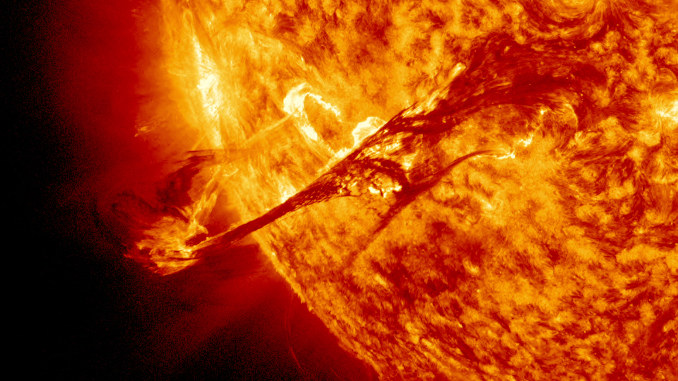
By S.T. Patrick
Humanist psychologist Abraham Maslow once theorized about a hierarchy of human needs that could be used to explain man’s inner motivations. Self-actualization tops the pyramid with physiological needs serving as its base. Today, it can be said only half-jokingly that “internet access” may be climbing that list. As the world becomes a more contentious place and as more people take to the streets in protest, governmental control over the “internet kill switch,” as well as the possibility of external factors that could affect global internet access, become more important.
This week, millions of residents of Melbourne, Australia’s largest city, were without internet or phone as a “massive telecom failure” crippled the metropolis as protesters from the anti-lockdown and anti-vaccine movements continue to flood the city’s streets. There is concern among protesters in Australia and around the world that Melbourne was a test case for use of the “internet kill switch” that most heads of state control in their respective nations.
In the wake of the internet outage on Sept. 23, Holly Mystkowski tweeted what many have been wondering. “After the internet blackout today in Melbourne, I have a serious question. How do we communicate if they take the internet out? How do we mobilize? We need to plan ahead.”
Scientists have also started murmuring about the potential effects of a once-in-a-century solar superstorm, one effect of which would be massive internet outages. Solar superstorms are caused by the sun emitting a massive burst of electrically conducting plasma (a coronal mass ejection or CME). What is known about CMEs is that they are very destructive to power grids as an abundance of current flowing through causes them to heat up to the point of automatic shutdown. What is less known is precisely what impact a CME could have on a variety of newer telecommunications infrastructure.
A recent study from UC-Irvine and VMware Research found that the predictions on the impact of a CME on internet connectivity are little more than mere guesses at this point, thus making a potential event all the more worrisome. Undersea internet cables may be robust enough to withstand a solar event, but if the hardware on each end cannot withstand the impact, telecommunications would still falter. Long-distance optical fiber lines and submarine cables may prove to be more vulnerable.
Dr. Jeffrey Love, a geophysicist in the Geomagnetism Program of the U.S. Geological Survey has concerns. “The long, large-scale electricity systems are grounded because you seek stability in the operation of your power grid or your telecommunication cable. And, normally, grounding it to the earth provides that stability, but it’s during a solar storm that it doesn’t. So that’s the kind of paradox,” Dr. Love said. “They are exposed to the magnetic storm hazard because they have these components called repeaters that are grounded. So yes, the long telecommunication cables are also vulnerable.”
In 2017, Rep. Tulsi Gabbard (D-Hawaii) told Fox News that a growing concern regarding an electromagnetic pulse (EMP) attack on Hawaii’s communications systems and electrical grid “is real and must be taken seriously.” There would even be a risk to Hawaii if the EMP attack were continental. “If an attack occurred on the mainland and the electric grid were shut down on the West Coast, it would create a crisis in Hawaii through the total disruption of our food and energy supply chain,” Gabbard said.
An EMP attack is a burst of electromagnetic energy. It can occur naturally, but, more likely, it would occur through the use of nuclear energy weapons. U.S. defense analysts believe that one attack could take out the entirety of the U.S. power grid.
A 2015 US News & World Report story emphasized the crisis that could occur if an EMP attack were perpetrated on the U.S. or any nation. “A failure here could cascade across other vital national infrastructures, severely disrupting everything we take for granted, from food and water to cell service and sewer systems,” wrote Bryan Gabbard and Robert Joseph. “However, little has been done to take the necessary steps to protect our infrastructures, thus our vulnerability only continues to increase.”
Whether the internet connectivity problems are inflicted by authoritarians or environmental anomalies, people should indeed be prepared. In days gone by, we knew how to get to places without GPS, we knew where people lived, and we could find those we needed to find. Many families also had emergency plans that included a meeting place outside the home. Preppers have maintained some form of that societal caution, and now it’s the preppers that are starting to look like they were always ahead of the internet curve, as well.



